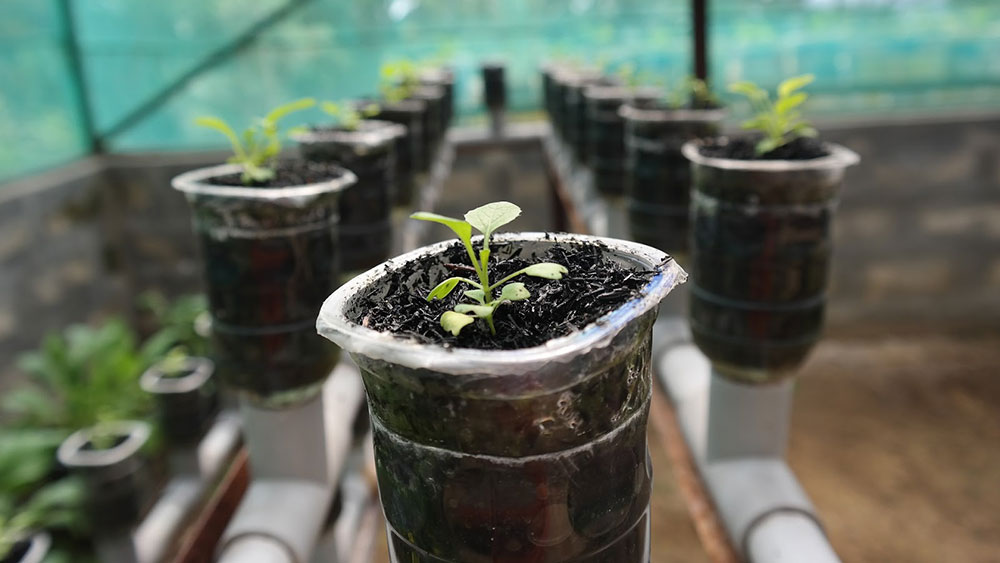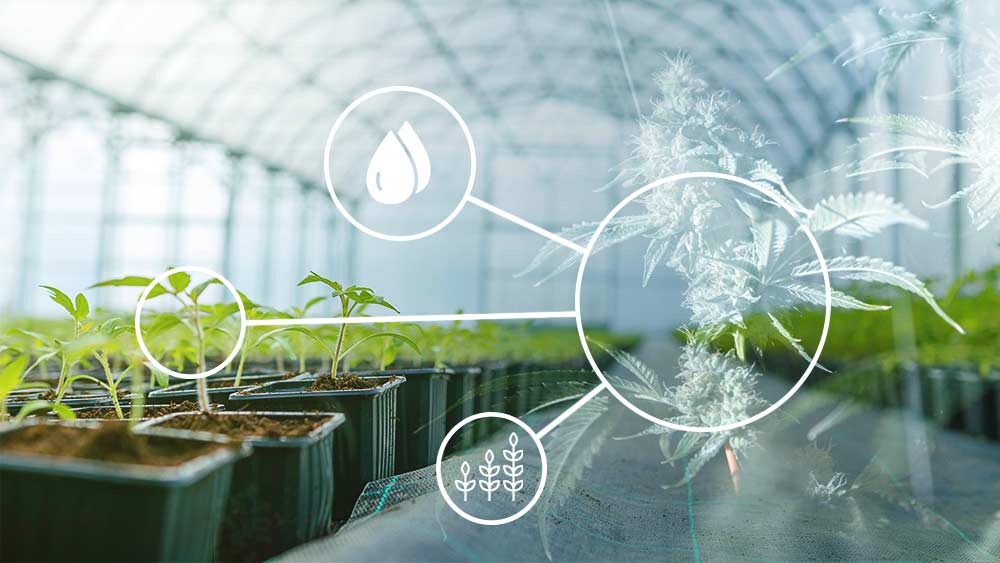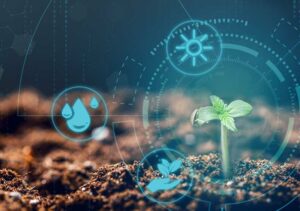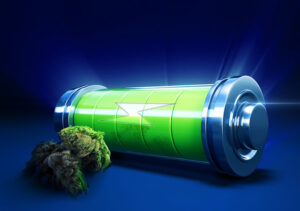With the prohibition era coming to an end, cannabis cultivation is slowly leaving the indoor setup for a better alternative – growing marijuana in a greenhouse.
Greenhouses use Mother Nature’s gifts more efficiently.
Whether fully automated systems or simple DIY products, they represent a cost-effective and environmentally sustainable solution for growers of all calibers.
In other words, greenhouses are used both by amateur and commercial growers, because you can cover two plants relatively easily with appropriate material, or build a more complex structure that is sufficient to support massive commercial production.
Whatever might be your preference, it’s wise to think ahead and have a plan.
Here’s our comprehensive guide to aid you in the process.
How does a greenhouse “work”?
In essence, any environment enclosed with a transparent material (glass, fiberglass, plastic) can be considered a greenhouse.
It only needs to fulfill two functions: to create an ideal microclimate for growth and protect your plants.
How does it do that?

The transparent panels let the sunlight in, they heat the covered environment, and keep it warm for a prolonged time.
As long as there is sunlight, there’s no need for additional heating.
Also, the covering acts as a giant shield that protects your plants from bad weather, intruders, and pests.
In a word, greenhouses are your own pieces of controlled microclimate that use mostly natural sources to create optimal cultivating conditions.
The advantages of growing marijuana in a greenhouse
Greenhouse cultivation combines the benefits of indoor and outdoor growing setups, using their best practices and experience.
Here’s how:
Using sunlight cuts costs
Growing marijuana indoors requires serious investment because you have to artificially create the ideal climate for the plant growth.
That spells bad news for your budget. High electricity bills are inevitable.
One of the best things about greenhouses is using natural sources that are free of charge.
Greenhouses are environmentally sustainable
Not having to pay an enormous electricity bill at the end of the month also means that your greenhouse isn’t causing pollution or harming the surrounding ecosystem in any way.
Scalable. Suits different budgets
As I said, there are so many different options on the market today that the price of a greenhouse could be anywhere between a hundred a million dollars.
Longer growing seasons
Fully automated greenhouses allow cultivation year-round. But even those with more modest equipment will expand your growing season and allow multiple harvests.
Nevertheless, if you opt for a single harvest per season, your plants will have more time for the vegetative stage, which means they’ll be stronger and bigger when the flowering kicks in.
Environment control
Unlike outdoor marijuana growing, having your own piece of encapsulated environment puts you in control of nearly everything: lighting schedule, temperature, humidity. You can even buy specialized equipment for odor control.
They are fairly safe and sound
You can use a simple lock or fence against intruders, an inexpensive entrance net against pests. No one can get in unless they are invited.
They can be automated
Whether you don’t enjoy cultivating activities per se, or you just don’t have the time, the good news is that there is supplemental equipment for nearly everything in your greenhouse.
Depending on your budget, you can have one or many automated systems do the labor for you.
High-quality results
People swear that weed is more potent when grown in a greenhouse. I’m not sure about that, but the ideal climate will surely lead to top-shelf yields.

What is the right greenhouse for me?
When deciding which type of greenhouse is a perfect fit for your needs, you really have to do your own math.
Consider a variety of individual factors, such as the climatic zone you live in, specific location, the scope of production, budget limitations, etc.
In short, every greenhouse is a project on its own.
You first have to consider its size and materials.
A general rule of thumb is to always buy or construct a bigger greenhouse than you initially planned to.
You’ll need approximately 7.5 L of soil for each 30 cm of plant height.
Also, bear in mind that you’ll need a storage room, working table, and some extra space for additional equipment (even if you aren’t buying it now).
As for the materials, know that every transparent covering would be equally efficient, but that glass is more suitable for areas with strong wind.
I would always advise buying diffused panels because they decrease the risk of overheating (the same effect can be achieved with white shading paint).
Probably the most important thing about your greenhouse project is figuring out the perfect position. I recommend you face it southwards, which will give you t least 7 hours of direct sunlight. This will bring higher yields.
Lastly, you need to decide on the precise type of a greenhouse.
Nowadays there are pre-built greenhouses in various shapes. I think that sticking to simple designs and traditional materials is the best way to go.
Growing under panels: specifics of greenhouse cultivation
In essence, the basics of marijuana cultivation are the same in any setup.
If you’re a first-time grower, I strongly suggest that you consult our follow-along guide for growing weed indoors. The equipment might be slightly different, but the procedure is pretty much the same.
There are three options to choose from when sowing in a greenhouse: you can do it in pots, directly into the ground, or use hydroponic systems.
Pots are more portable, plants sown in the ground can be left unattended for slightly longer, and hydroponic systems require investment, but they provide excellent results.
Whatever might be your preference, one thing is for sure: you want to buy quality seeds and soil. That’s an ultimate must because even the most advanced growing system can’t make it up for a poor starting point.
That being said, you want to make sure to replace the soil each year. It’s more than a good idea to mix it with perlite, nutrients and fertilizers, as this will give your plants proper nutrition.
As for the seeds, you should know that not all strains are a good fit for growing in a greenhouse. Maui Wowie and Sour Diesel will quickly overgrow this setup, Trainwreck doesn’t need it, while Pineapple Express especially loves it.
After the young plants have started to grow, it is essential to control the climate inside your greenhouse.
The main danger comes from overheating. Your cannabis needs a constant temperature of 25°C (77 F). If it gets hotter than that, you’ll have to cool the environment mechanically (by creating a draft) or by using automated ventilation.
Keeping your greenhouse ventilated is also a key factor in regulating humidity and preventing mold. The general recommendation is to keep the humidity levels between 60-70% for young plants and seedlings, and about 40% for fully flowered plants.
As you can see, there is little or no room for chance when growing marijuana in a greenhouse.
That brings us to the next crucial question: is supplemental equipment essential or optional?
Supplemental equipment
As I mentioned earlier, every greenhouse is a project on its own.
The same goes for related equipment. If you’re planning massive production, you have to take into account significant investments, which include acquiring additional equipment.
But if you’re growing marijuana on a small scale, you probably don’t have the budget for fully automated cultivation infrastructure.
Having that in mind, I will here classify my recommendations according to different budgets and production needs.
There are a number of things you can buy at your local garden center that will make growing weed much easier: lock or fence for security, bug screens for doorways, fertilizers, pesticides, weed barriers, or white shading paint if your panels aren’t diffused (they prevent overheating and unwanted glances at the inside of your greenhouse).
If you have a few hundred bucks, it is worthwhile to invest the money in ventilation systems and humidity controllers. The expense will be justified right after the first quality harvest.
Now, if you really mean business and want to indulge in multiple harvests per season or grow marijuana year-round, you’ll need heaters, supplemental lighting, and black-out screens.
By using those, you’ll be able to regulate a precise lightning schedule and mimic the natural sunlight cycle to provoke flowering.
Naturally, these are expensive additions that will only pay off if you plan to grow on a larger scale.
It all comes down to individual calculation. I recommend unpretentious investments for small-scale production, which can be gradually adjusted to your needs.
Final thoughts – are greenhouses the future of growing marijuana?
When you look at some of the greenhouses for commercial farming, you might get the idea that the era of indoor growing is coming to its end.
That is because greenhouses have the ability to imitate both indoor and outdoor setups, and because they are more cost-effective. Maybe even because they are environmentally sustainable.
We don’t want to jump to any conclusions, but hopefully all this will help you make up your own.





Earl Norris August 11, 2020 at 6:48 pm
My greenhouse is working out perfectly, I'm a first time grower with this setup. I'm located in the Midwest, the climate is perfect. We had a big storm yesterday, the greenhouse protected my babies. The plants are reaching for the sky, the best thing about the greenhouse, the plants get sun from all sides. I hope the weather stays good until October, sometimes it can become very cool in October when you live in the Midwest. I started a little late, mid June, the greenhouse keeps the plants warm at night and they have no issues during the hot days. The plants sit on wood pallets, all of my 3 gallon pots have holes in them and the water drains out. I used a good potting soil with nutrients added. I have also added additional nutrients. I have been topping my plants (trimming), they're still out growing the greenhouse, I'm going to get some trellis to put over the tall plants. If you have any advice, please leave a comment.
Martine Klein March 3, 2021 at 8:11 pm
I would appreciate if someone can tell me what happens to greenhouses that have not been used for over 3 years? I am considering bringing these back to life but I am concerned about how long they have been sitting idle. Are there things I would need to check to get a better feeling for possible problems in the future? Of course the sellers are saying no problem, Heard that before.These are large tentlike structures that I would think require some type of maintenance. What is needed to keep greenhouses maintain optimal condition and what should I look out for? Thank you in advance for any information you can provide.